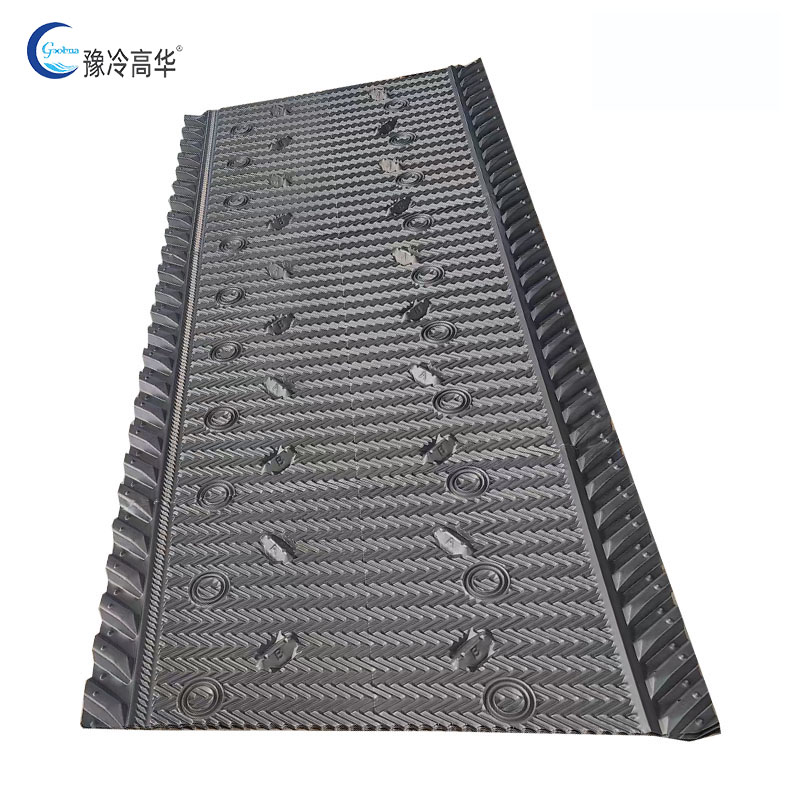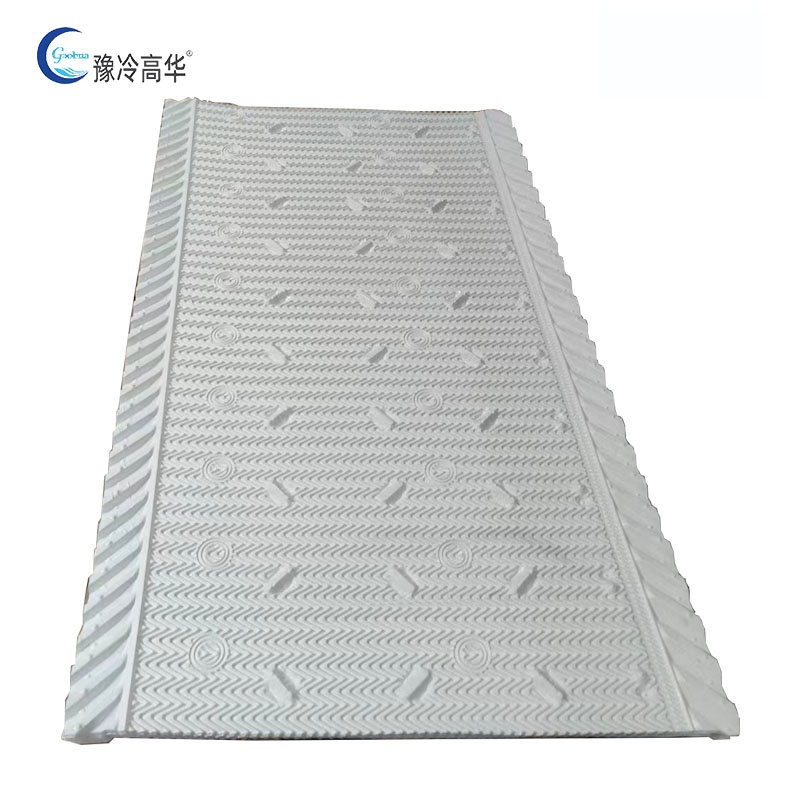FAQ
The fundamental difference between cross-flow air cooling tower and counter-flow air cooling tower is how the air being pulled into tower is interacting with the process water being cool.
In a cross flow tower, water will start at the top of the fill and work its way down the fill, while air travels horizontally across the direction of the falling water.
The way across flow cooling tower is designed allows for a really large plenum. The large plenum area allows for, in some cases, full-sized access doors. It allows us to inspect the cold water basin, looks at the drift eliminators, and even room for mechanical access platforms so that we can check out and service the motor and gearbox and fan at the top of the cooling tower.
Another fundamental difference between cross flow and counter flow air cooling tower is the water distribution system. On a cross fill of cooling tower, The process water or condenser water is piped up to the top of cooling tower, going through HC valve or a flow control valve and then distributing into water distribution basin. The hot water distribution based on a cross flow tower is gravity-fed. One of the the benefits of a gravity fed distribution basin is the ability for it handle variable flow or low flow applications. We can go down to as 30% of design flow and still be able to predict the performance of the cooling tower.
While, In the counter flow tower, water enter the side of the cooling tower through inlet pipe and been spread by water distribution system, then drip into the film. Due to gravity, it gonna to pass through the fill and drop out the base of the film and fall into the water basin. Once the water is fall into the base of the cooling tower, it will be discharge by the pipe and go back to the process. While the air enters around the base of the cooling tower through louvers, the it gonna be drawn up through the fill, flowing upward and away from the tower. The water goes down and air goes up. They are in opposite directions, 180 degree. That is why we called counter flow cooling tower.
1.The introductionof closed cooling tower.
Closed cooling tower, also called evaporative air cooler, the tube heat exchanger is placed in the tower to ensures the cooling effect through the heat exchange of circulation air, spray water and circulating water. Because the process is a closed cycle, it can make sure the water is not polluted, which effectively protects the efficient operation of the main equipment and improves the service life. When the outside temperature is low, you can stop the sprinkler system to achieve water saving effect.
2.Principal of closed cooling tower
Closed circuit cooling towers or fluid coolers operate just like the open type, but dissipate the process fluid heat load into the ambient air via a heat exchange coil. This isolates the process fluid from the outside air, keeping it clean and free of contamination in a closed loop and creating 2 separate fluid circuits:
- An external circuit, in which spray water circulates over the coil and mixes with the outside air.
- An internal circuit, in which the process fluid circulates inside the coil.
3.Closed cooling tower’s Advantages
1.No scaling, no pipe blockage
2.Small floor area
3.Water saving and energy saving
4.High cooling efficiency
5.Not affected by the environment,environment-friendly
The advantages of evaporative condenser are as following:
- Save investment cost. Theevaporative condenser integrates the condenser, circulating water tank, circulating water pump and water pipe, which reduces the equipment such as cooling tower, circulating water pump and water pipe, and also reduces the cost of processing and installing individual components in the condenser system. Because of the efficient use of evaporative cooling and heat exchange, the evaporative condenser can effectively reduce the heat exchange area, the number of fans and fan motor power consumption.
- Energy saving. 10%~20% electrical energy can be saved due to low pressure condensation of refrigerantcompared with shell &tube condensers.
- Water saving. The evaporative condenser water consumption is only 1‰-3‰ of the heat exhausted, making the actual operation of the evaporative condenser water consumption is 5%~15% of the cooling tower system, saving water resources .
- Good heat exchange performance. Due to the large latent heat of vaporization of water, the amount of heat absorbed by a unit of water is large. Inside and outside the heat exchanger, water, air, and a cooling medium alternately flow, making the heat transfer faster and the heat transfer efficiency increase, thereby achieving efficient heat exchange.
Welcome to contact us for more product information.
Cooling tower can be widely used in many industries, such as power industry, coal chemical industry, petroleum and petrochemical industry, refrigeration industry, metallurgical industry.
- Waste heat recovery power generation technology.
Waste heat power generation in accordance with the working fluid can be divided into steam turbine power generation technology with traditional waste as the working fluid and with low boiling point as working fluid organitic power technology. Above 350℃ heat mainly use steam turbine or expander power generation system. For most of abandoned waste heat below 350℃ is more suitable to use economically viable organic Rankine cycle cogeneration technology.
Waste heat power generation is a technology that uses excess heat energy in the production process to convert it into electrical energy. Waste heat power generation is not only energy-saving, but also environmental protection. The waste heat used for power generation mainly includes high temperature flue gas waste heat, chemical reaction waste heat, waste gas, waste liquid waste heat and so on.
Waste heat power generation can be divided into traditional steam turbine power generation technology with water as working medium and organic working medium power generation technology with low boiling point working medium according to working medium. The waste heat above 350℃ mainly uses the power generation system composed of steam turbine or expansion unit. For a large amount of discarded low-temperature waste heat below 350℃, it is more suitable for economically feasible organic Rankine cycle waste heat power generation technology.
Winter antifreeze solution of closed cooling tower and evaporative condenser
The evaporative condenser( closed cooling tower) is widely used in metallurgy, electric power, petroleum, chemical and other industries, it has the advantages of water-saving, energy-saving, high heat exchange efficiency and so on.
The temperature is usually below zero in winter, and the problem of frost prevention in the operation of closed cooling tower has become increasingly prominent. If it is not solved well, the heat exchange tubes or other parts of the cooling tower may be damaged by freezing. So, it is necessary to consider the issue of winter antifreeze solution of closed cooling tower. There are several solution for different operation condition.
- )The closed cooling tower is barely used in winter
If the closed cooling tower does not need to be operated in winter, the spray water and circulating water inside the heat exchange tube must be drained when it is shut down.
Specific operation sequence:
① Turn off the power of the axial flow fan and spray water pump successively;
② Close the equipment inlet valve, open the tube bundle vent and drain sealing cover, connect the DN32 water pipe to the tube bundle drain pipe to introduce the water in the tube bundle into the water tank, then close the water tank replenishment valve, open the drain valve to empty the water tank, and turn on the spray water pump The drain outlet drains the water in the pump body;
③ Open the bottom line plug of each pipe pass, and use high-pressure air to drain the residual water in the pipe;
④ Install the wire plug to the equipment, and cover the tube bundle to vent and drain.
(For a closed cooling tower with a flexible coil structure, when it is out of service, open the inlet and outlet valves of the equipment to drain the medium in the pipe)
- )The closed cooling is occasionally used in winter
In winter, the evaporative cooling equipment has a large heat dissipation capacity. For a system with multiple equipment running in parallel, some spraying water and fans can be stopped to reduce the heat dissipation of the equipment to achieve the purpose of antifreeze. For equipment with water tanks, it should be installed as far as the water storage tank or underground drainage pool. When the spray water temperature is lower than 10℃, the water in the water collection tank should be emptied.
For the antifreeze of a small circulating water system, consider adding glycol and then air-cooling operation; adding antifreeze can solve the problem at one time. Ethylene glycol solution is the main component of most antifreeze liquids. The disadvantage is that the price is higher (≈$1400/ton).
Ethylene glycol solution is the main component of most antifreeze liquids. Refer to the following table for antifreeze formula:
|
Ethylene glycol(wt%) |
0 |
10 |
20 |
30 |
40 |
50 |
58 |
80 |
90 |
100 |
|
Freezing point(℃) |
-0.0 |
-3.5 |
-8 |
-15 |
-24 |
-36 |
-48 |
-47 |
-59 |
-63 |
- )The closed cooling toweryear-round operation
When the ambient temperature is 0°C ~ -5°C, anti-freezing measures must be taken when the machine stops for more than 10 hours;
When the ambient temperature is -5°C ~ -10°C, anti-freezing measures must be taken when the machine stops for more than 5 hours;
When the ambient temperature is lower than -10°C, anti-freezing measures must be taken when the machine stops for more than 1 hour.
- What is air-inlet grille?
The inlet grille is made of PVC material by molding and bonding. The outer frame can choose hot-dip galvanized steel plate, glass steel plate, stainless steel plate. This product has a good air intake effect and has the effect of blocking the water splashing out of the cooling tower. It can be used at the air inlet of the closed cooling tower or other occasions where the air intake blocks the floating water.
And The height and width of the inlet grille can be customized.
- What is the advantages of using PVC inlet grille compared with inlet louvers?
The PVC inlet grille is mainly applied to the air inlet of a closed cooling tower. Compared with ordinary inlet louvers, this inlet grille has at least the following three advantages:
(1). The appearance is beautiful. Many foreign closed cooling towers use this kind of air inlet grille.
(2). Do not splash water outside the cooling tower. This kind of inlet grille needs to turn three times to reach the outside of the cooling tower, so there will be no splashing of water droplets outside the tower.
(3). Prevent direct sunlight from entering the cooling tower water tray. The cooling tower water tray exposed to direct sunlight is easy to breed bacteria and algae, and the use of this type of PVC inlet grille will not cause sunlight to enter the water tray. Therefore, the cooling tower circulating water or spray water will not grow moss.
(4). Maintenance is convenient. This kind of air inlet window can be customized. The size of the air inlet window can be specified according to the actual cooling tower. During installation, you only need to gently push into the cooling tower and clamp it tightly. Maintenance is very convenient.
In traditional chemical cooling systems, water has been widely used as an ideal cooling medium for a long time. However, with the scarcity of water resources and the strengthening of environmental protection awareness, energy-saving, water-saving, and pollution-free air cooled heat exchanger have been more widely used. At present, the most commonly used air cooled heat exchangers (air cooler) in the world are mainly forced draft air cooled heat exchanger, induced draft air cooled heat exchanger and slop- top air cooled heat exchanger.
Compared with the traditional cooling system that uses water as the cooling medium, the air cooler has its advantages and disadvantages. The advantages and disadvantages of these two cooling methods are compared below.
Advantages of air cooling:
- Air can be obtained for free, and no auxiliary costs are required.
- If the air cooling is used, the choice of plant site is not restricted.
- The pressure drop on the air side of the air cooler is only about 100~200Pa, so the operating cost is low.
- The maintenance cost of the air cooling system is generally only 20% to 30% of the water cooling system.
- Once the fan power is cut off, the air cooling system still has 30%-40% natural cooling capacity.
Disadvantages of water cooling:
- Cooling water is often limited by water sources, and auxiliary facilities such as pipelines and pumping stations are required.
- Sufficient water sources must be considered when selecting the plant site.
- The water is corrosive and scale. It needs to be treated regularly to prevent fouling and siltation of stolen goods.
- The circulating water pump has high pressure head and high operating cost.
- There are many water-cooled equipment, which are easy to scale and often need to be shut down for cleaning.
- Once the poweris cut off, all production will be stopped.
Disadvantages of air cooling:
- Since the specific heat of air is small and the cooling effect depends on the dry bulb temperature of air cooling, it is usually impossible to cool the process fluid to ambient temperature.
- The air cooler is easily affected by ambient temperature, rain, snow, and strong wind.
- Due to the low heat transfer coefficient and small specific heat on the air side, the air cooler needs a larger area.
- The air cooler cannot be close to large obstacles, such as buildings and trees, otherwise it will cause hot air circulation.
- The air cooler needs to use specially finned tubes.
- There is a certain amount of noise during the operation of the air cooler.
Advantages of water cooling:
- Water cooling can usually cool the process fluid to 2~3℃ lower than the air temperature, and the circulating water can be cooled to close to the ambient wet bulb temperature in the water tower.
- Water cooling is not sensitive to changes in ambient temperature.
- The water cooler has a compact structure, and its cooling area is much smaller than that of the air cooler.
- The water cooler can be installed between other equipment, such as under the pipeline.
- General heat exchangers can meet the requirements.
- No noise.
Through the above analysis, air-cooling and water-cooling systems have their own advantages and disadvantages. We need to make a comprehensive evaluation of air-coolers and water-coolers in the design, and choose air-coolers or water-coolers reasonably according to the specific conditions to achieve economical and energy-saving purpose.
The air cooler is mainly composed of tube bundles, fans, tube boxes, structures and shutters. In addition, there are two inlets and outlets at the position of the tube bundles. There is a platform and a ladder connected to the tube header. In addition, air coolers are also divided into horizontal air coolers, vertical air coolers and inclined air coolers and other centralized basic types, and air coolers can be classified according to cooling mode, tube bundle layout, and ventilation mode.
The air cooler is mainly composed of tube bundles, fans, tube boxes, structures and shutters. In addition, there are two inlets and outlets at the position of the tube bundles. There is a platform and a ladder connected to the tube header. In addition, air coolers are also divided into horizontal air coolers, vertical air coolers and inclined air coolers and other centralized basic types, and air coolers can be classified according to cooling mode, tube bundle layout, and ventilation mode.
The tube box in the air cooler is also divided into Pipe header, Semi-circular header, Cover plate header and Plug headers.
1. Pipe header
This type of tube box has the characteristics of low resistance and good sealing effect, which can effectively prevent the leakage of harmful liquids and gases. The maximum allowable working pressure is 35MPa, which is suitable for high temperature, high pressure, toxic, flammable and explosive cleaning media.
2. Semi-circularheader
This header adopts a fully welded structure, no wire plugs, cover plates and other detachable parts, and the sealing performance is high. This design is mainly used in the condensation of vacuum exhaust steam.
3. Cover plate header-for very dirty flows
Cover plate header is mainly used in mixed medium, the pressure is less than 6.4Mpa, and it is suitable for frequent cleaning conditions.
4. Plug headers-generally the most used
The plug header is a widely used air cooled heat exchanger structure, and the allowable working pressure is less than 20Mpa.
It adopts the process of deep hole welding and expansion, and plugging holes is convenient for welding, maintenance and cleaning of tube sheet and base tube. Generally used in occasions where the media side is dirty and needs frequent cleaning.
Air Cooled Heat Exchanger (Air Cooled Condenser) is one of the most important heat exchanging equipment in industrial field. As a heat transfer in the processing equipment, exchanger is wildly used in chemical industry, metallurgy, oil power, food, defense industry. From design, operation to troubleshooting, reasonable heat exchanger design is of great significance.
Several common problems and troubleshooting methods of air cooled heat exchangers are shown in the following table
|
Fault |
Cause of fault |
Elimination method |
|
The motor current is too large or the temperature rises |
Abnormal changes in blade angle; |
Tighten after correcting the installation angle; |
|
lThe bearing seat vibrates severely; |
Re-adjust; |
|
|
The reason of the motor itself; |
find out the reasons; |
|
|
Current wire cut off; |
Check whether the power supply is normal; |
|
|
Unusual sound from moving parts |
Bearing wear; |
Replace the bearing; |
|
Lack of lubricating oil; |
Replenish lubricating oil; |
|
|
The rotary parts contact with the fixed parts; |
Adjust the opposite position; |
|
|
The fastening screw is loose; |
Tighten the screws; |
|
|
Bearing temperature rise is too high |
The bearing seat vibrates severely; |
Re-adjust; |
|
Lack of lubricating oil; |
Replenish lubricating oil; |
|
|
Lubricating oil has deteriorated; |
Change the lubricating oil; |
|
|
Bearing damage; |
Replace the bearing; |
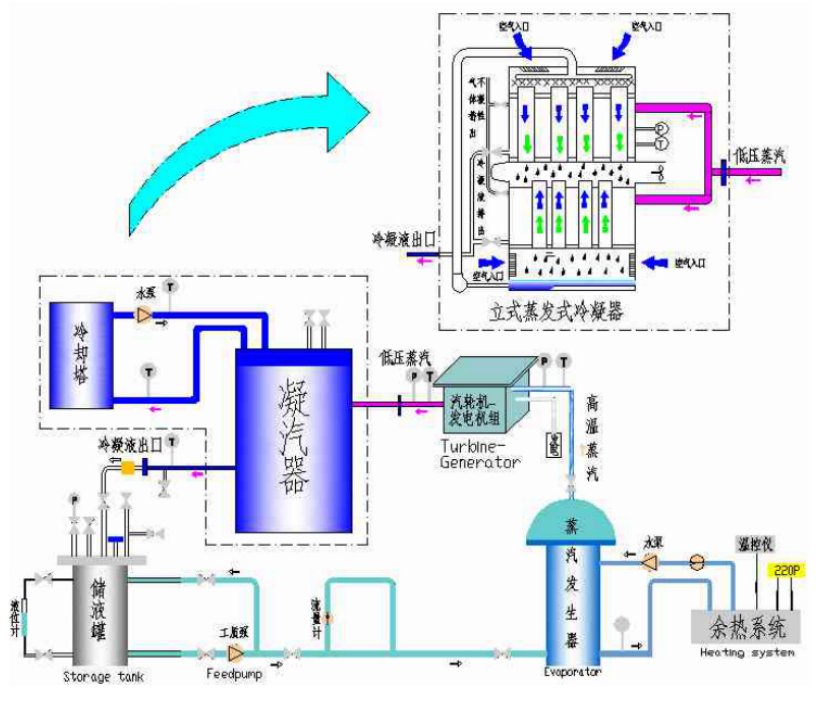
①Energy saving. On the one hand, the evaporative condenser combines the condensation of water vapor with the water cooling process, omitting the transfer stage of cooling water from the cooling tower to the condenser, and the circulating water volume is only 5% to 10% of the water-cooled type. The input power of the cooling water pump is effectively saved; on the other hand, the cooling water temperature of the evaporative condenser is closer to the air wet bulb temperature, and the corresponding condensing temperature can be lower, and its condensing temperature is 8~11 ℃ lower than that of the air-cooled condensing system , which is 3~10℃ lower than that of the water-cooled condensing system, thereby improving the efficiency of the entire waste heat power generation system.
② save water. The temperature rise of the cooling water in the condenser is about 5~8℃, that is, 1kg of water takes away 25~35kJ of heat, while the evaporative condenser mainly completes heat exchange through the latent heat of cooling water, and 1kg of water absorbs heat and evaporates. Taking 2450kJ of heat, the actual water consumption of the evaporative condenser in operation is 5% to 15% of the original, saving water resources.
③The effect of cold exchange is good. On the one hand, due to the large latent heat of evaporation of water and the large heat absorption per unit of water, water, air and cooling medium flow alternately inside and outside the heat exchanger, making the heat transfer speed faster and the heat transfer efficiency increased, so as to achieve better performance. Cold exchange effect; on the other hand, due to its use of enhanced heat exchange technology, the efficiency of the system can be greatly improved.
④ Small footprint. The evaporative condenser integrates the cooling process of the condenser and the cooling water, so that the air and water are forced to exchange heat and moisture, and the heat exchange efficiency is high, so that the process of heat exchange and removal can be completed in a small space. Moreover, the evaporative condenser has a very compact structure, so its area is only equivalent to 30% to 60% of the total area of the condenser and cooling tower, which is of great significance in today's increasingly tight land resources.
⑤Compact structure, easy to install and maintain. Because the two processes of heat and mass transfer are completed at one time in the evaporative condenser, there is no need for a cooling tower. Compared with the cooling tower cold exchange equipment in the waste heat system, the structure is more compact, and it is easier to form a whole during manufacturing. It brings great convenience. When a fault occurs, maintenance becomes easier, which reduces the difficulty and cost of project implementation.
⑥ Low operating costs. In operation, in addition to the energy-saving and water-saving effects mentioned above, the evaporative condenser also eliminates the water treatment problem caused by a large amount of water in the cooling tower system, which greatly reduces the operating cost. The comprehensive initial investment of condenser and cooling tower is actually higher than that of evaporative condenser.
It can be seen from the above that the use of evaporative condensers to replace the condenser and cooling tower equipment in waste heat power plants can not only achieve the goal of energy saving and water saving, but also have great significance for the safe and economic operation of waste heat power plants and the realization of sustainable development. Evaporative condenser equipment has opened up a new road, and it is worth vigorously popularizing and applying in today's energy shortage.
Why the cooling tower filler factory can't provide a price in one second?The normal service life of the cooling tower is about 15 years, but as a main spare part, the PVC filler's service life is 2-5 years depending on the water quality. Different brands and models of cooling towers have different types of fillers, and there are dozens of different types of fillers on the market. According to the classification of early well-known cooling tower manufacturers, such as Liangchi fillers, BAC fillers, Spindle fillers, KingSun fillers, Marley fillers, etc., different models of each cooling tower match different sizes of fillers. In addition, there are also other manufacturers who have designed or improved their own fillers, all those fillers add up to 100 types. That's why when you need to replace the cooling tower filler, the factory can't quote you in one second.
How to get accurate cooling tower packing prices?
If the user purchases from the local cooling tower manufacturer, they can inquire about the price of the cooling tower filler that needs to be replaced directly. But more often, users purchase from China or other countries through agents or intermediaries, and intermediaries are not familiar with the original cooling tower manufacturer or brand. In this case, we need to know some basic cooling tower knowledge to better find suitable fillers.
Cooling tower fillers are mainly divided into Through pole type and sticking assemble types, mainly made of PVC material with a working temperature ≤ 60 ℃, and PP material with a working temperature ≤ 100 ℃.
- Through pole-type filers
Because the position of the steel pole for hanging the fillers in the cooling tower is fixed, it is necessary to know the length, width, and angle (diagonal or right angle) of the filler, the hole position, and the hole size.
Sticking assemble types fillers
For sticking assemble types fillers, it is necessary to know the filler's length, width, and height, and also determine whether they need to be assembled for shipment. Usually, the assembled filler takes up a large area. In order to save space and shipping costs, the filler is shipped in loose pieces, and after arriving at the site, the user can assemble it by themself to use.
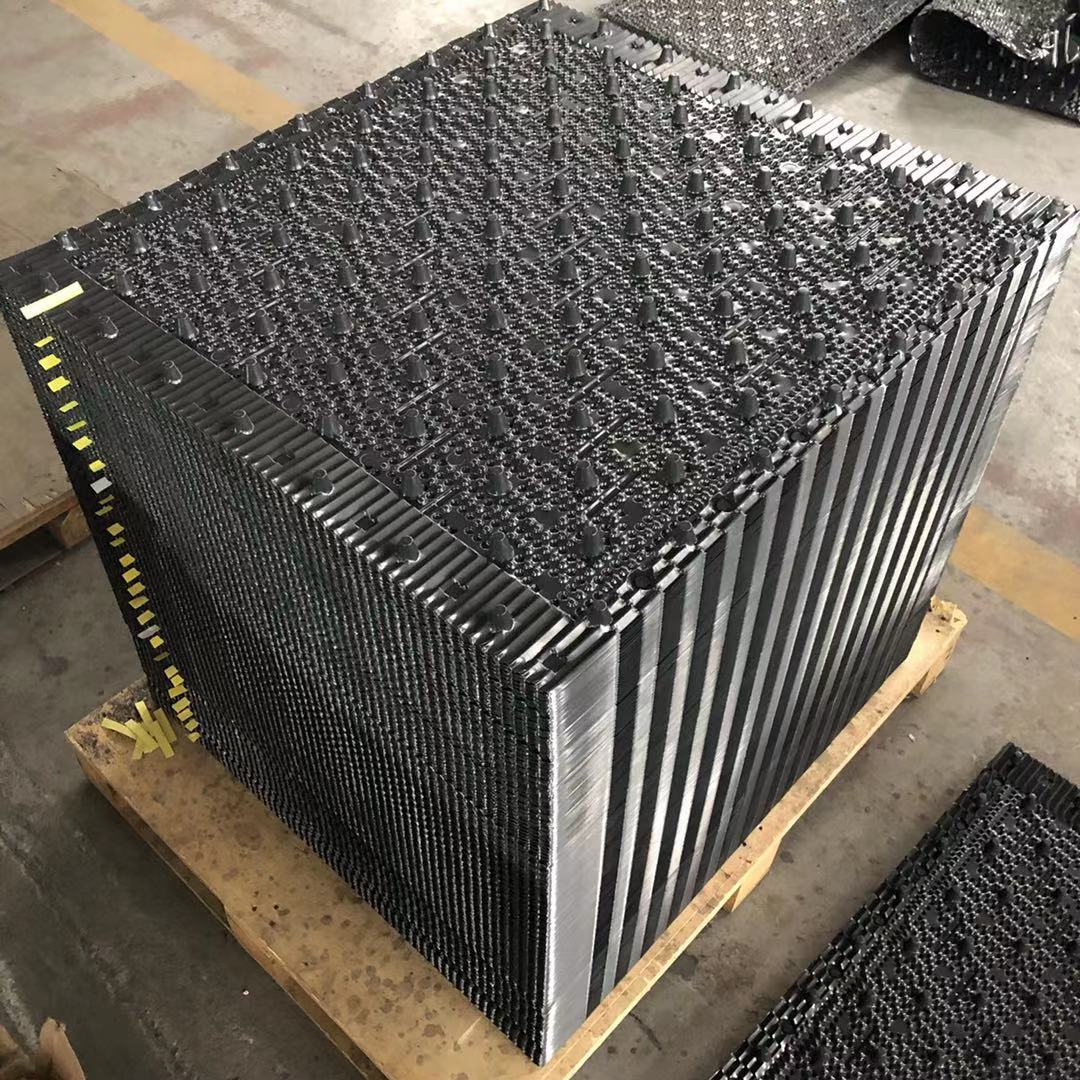
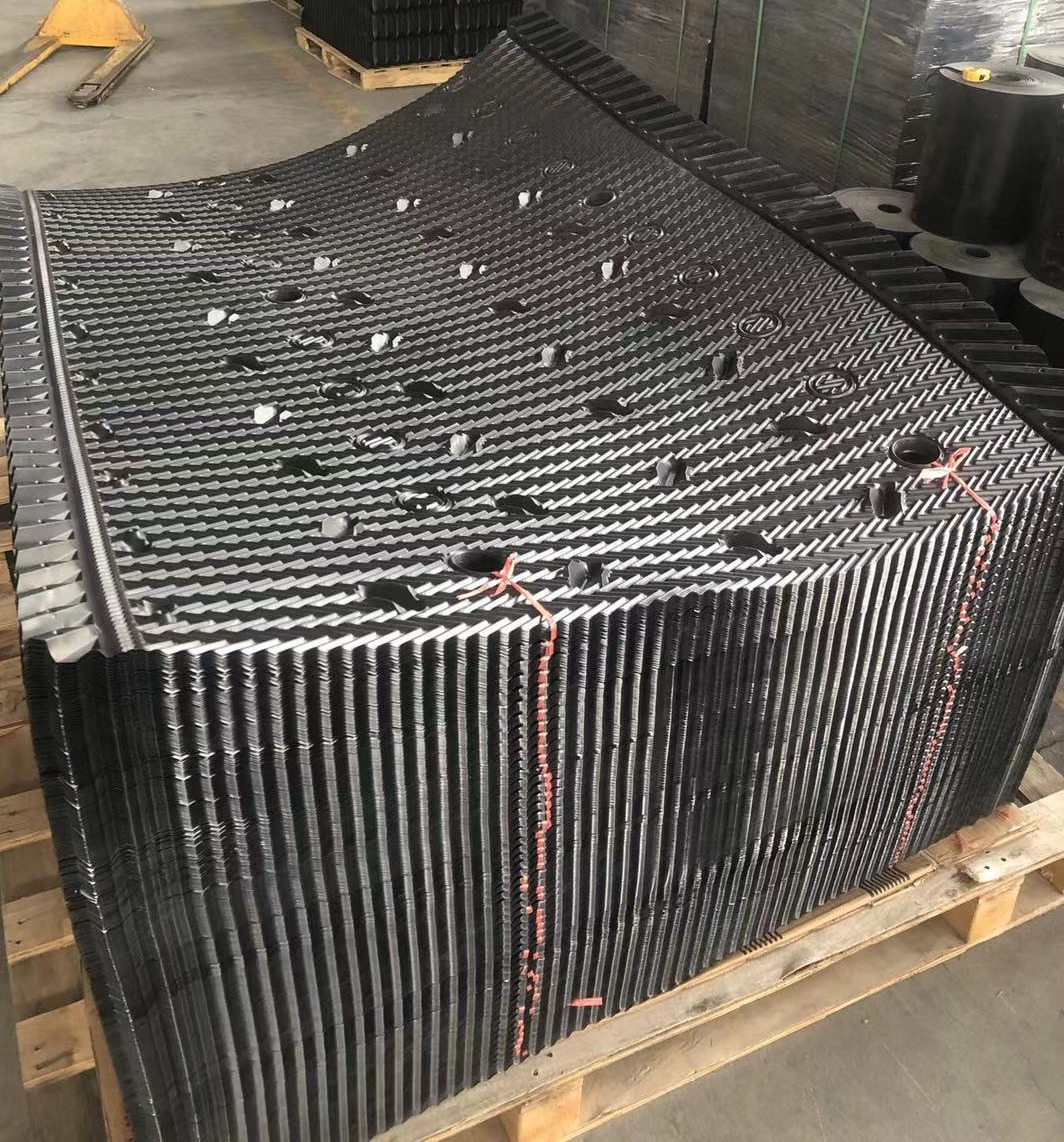
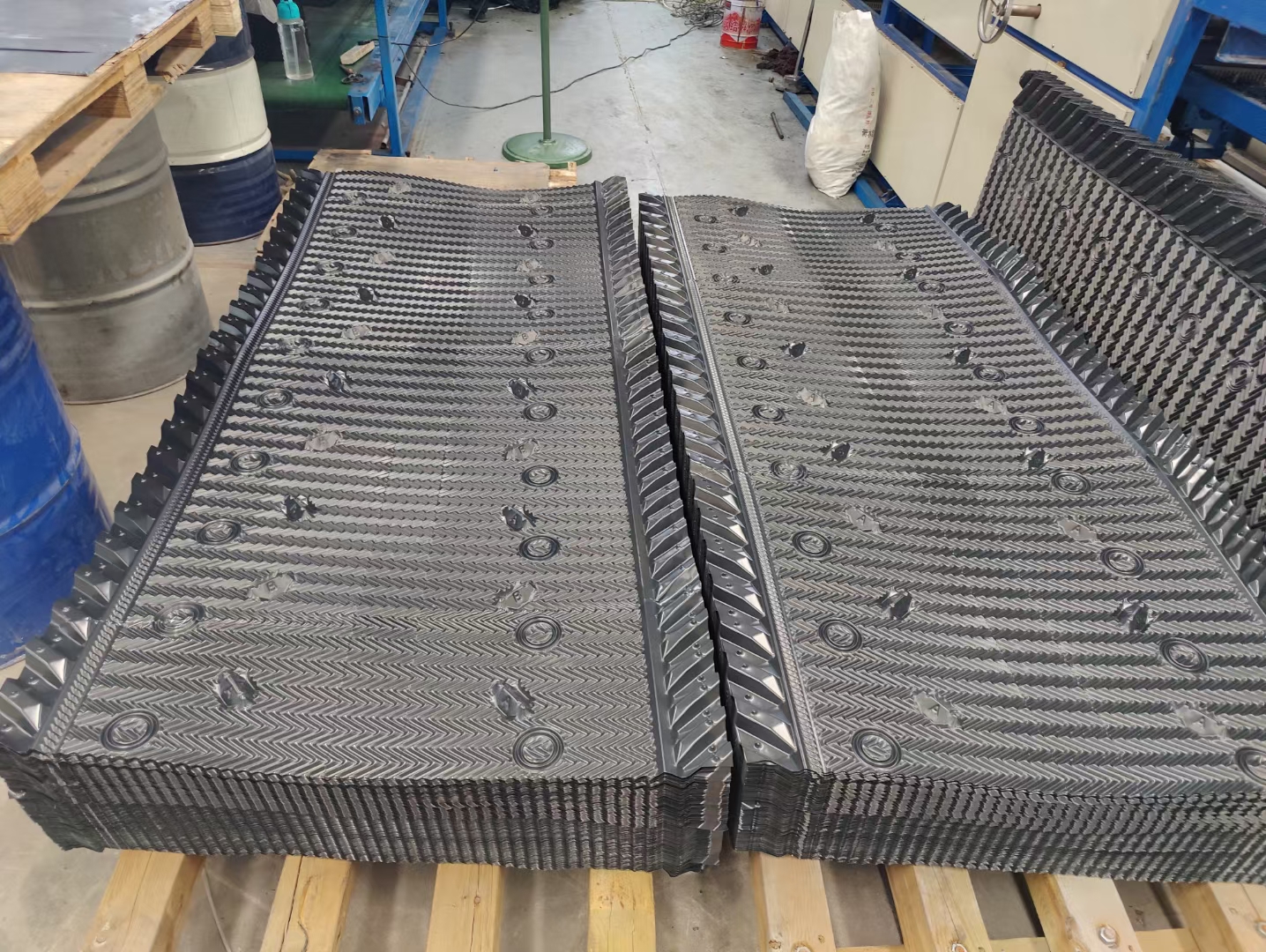
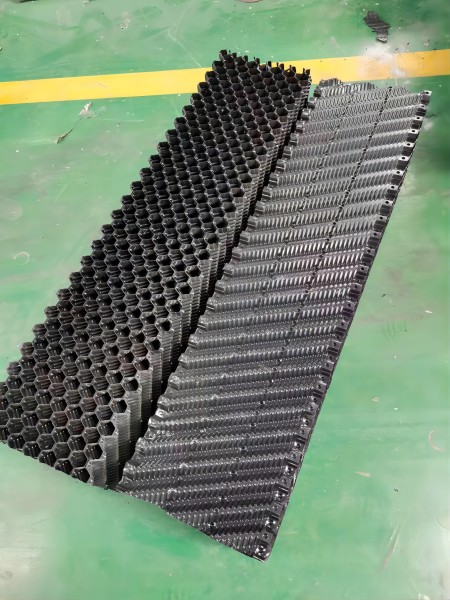

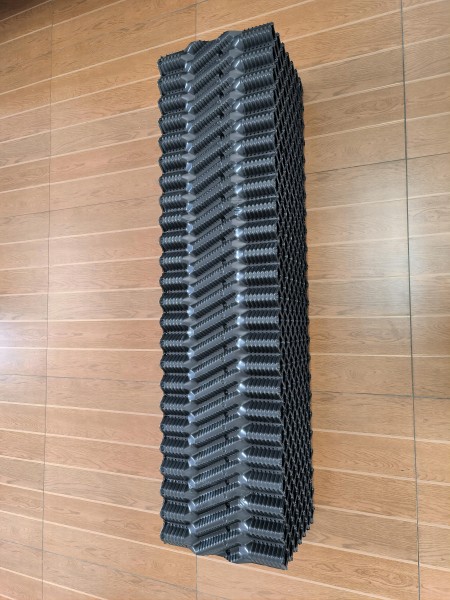
In summer, due to high ambient temperature and humidity, the air temperature at the inlet of the air-cooled condenser increases, leading to a decrease in the cooling capacity and vacuum of the air-cooled condenser. Even due to the return of hot air, the cooling capacity of the air-cooled steam decreases, sometimes causing a sharp increase in the back pressure of the turbine and tripping in a short period of time.
The installation of a peak cooling device on the air cooling island mainly leads some steam from the main exhaust pipe of the air cooling system to the newly added peak cooling device, thereby expanding the heat dissipation area of the steam turbine exhaust, reducing the cooling pressure of the air cooling island, improving the vacuum of the unit, solving the problem of limited load in summer, improving the power generation capacity of the unit, improving power generation efficiency, reducing coal consumption, and increasing business efficiency while not increasing the coal consumption and environmental emissions of the power plant, to achieve the goal of energy conservation, emission reduction, cost reduction, and efficiency improvement.
The successful operation of the peak cooling device has alleviated the limited output of the customer's air cooling unit in summer, reduced the impact of high temperature weather on the unit's load capacity, improved the unit's operational reliability and increased load capacity, further strengthened the unit's performance and peak capacity, reduced the air cooling fan mechanical and electrical consumption rate, and extended the service life of the air cooling fan, motor, and frequency converter. After being put into operation, the measured back pressure of the unit during the high temperature period in summer can be reduced by 5kPa, the unit can increase power generation by 100000 kWh/day, reduce coal consumption by 13.8 grams/kWh, save 3375 tons of standard coal annually, and reduce carbon dioxide emissions by 8602 tons.
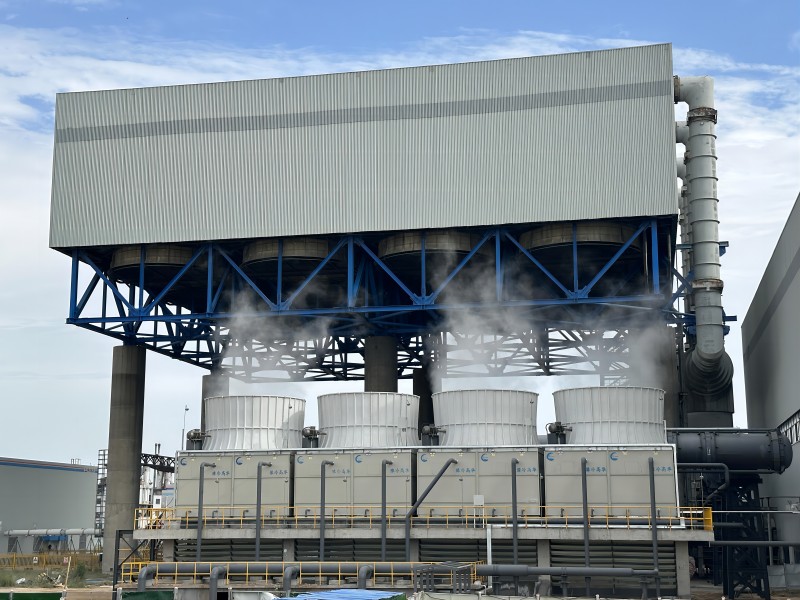

- What precautions should be taken when installing the air cooler tube bundle?
When installing the tube bundle, the following precautions should be taken:
(1) When lifting the tube bundle, steel ropes should be used to hang the lifting ears and prevent damage to the fins and paint layer.
(2) Multiple tube bundles are installed on the framework, and the gap between the tube bundle and the tube bundle side beam is (6 ± 3) mm.
(3) The deviation between the centerline of the pipe bundle inlet flange and the installation reference line shall not exceed ± 3mm.
(4) When the gap between tube bundles or between tube bundles and structures is greater than 10mm, asbestos ropes should be filled or sealing plates installed to reduce leakage.
(5) When installing the inclined top air cooler tube bundle, the limit clamps on the tube bundle and the frame should be securely clamped to prevent the tube bundle from falling off.
- Why is there an inclination in the installation of the horizontal air cooler tube bundle?
The horizontal air cooler tube bundle is placed horizontally, but in order to prevent condensate from staying in the tube, the tube should be tilted at 3 ° or 1%.
- What are the general requirements for the installation of air cooler tube bundles?
The general requirements for tube bundle installation are as follows:
(1) The design, manufacturing, and delivery of each tube bundle must be an integral component and on-site installation should be lifted and assembled as a whole. There should be lifting plates on each tube bundle, and it is not allowed to use tube bundle flanges or other accessories for lifting.
(2) Install tube bundles on a multi-span framework, and the width direction of each tube bundle shall not exceed outside the axis range of single-span frame columns.
(3) When installing multiple tube bundles on the same span structure, if the gap between the tube bundles is greater than 6mm, or if the gap between the bottom surface of the tube bundle side beam and the top of the structure is greater than 10mm, sealing plates or asbestos strips should be added to reduce air leakage.
(4) The installation dimensions between the centerline of the inlet and outlet flanges of the pipe bundle and the centerline of the column should be strictly in accordance with the design requirements, and the deviation should not exceed ± 3mm.
(5) During on-site installation, protective measures should be taken for the finned tubes of the tube bundle, and it is prohibited to step on or impact the fins with heavy objects.
(6) After the tube bundle is in place on the framework, loosen the connecting bolts between the movable tube box and the side beam.
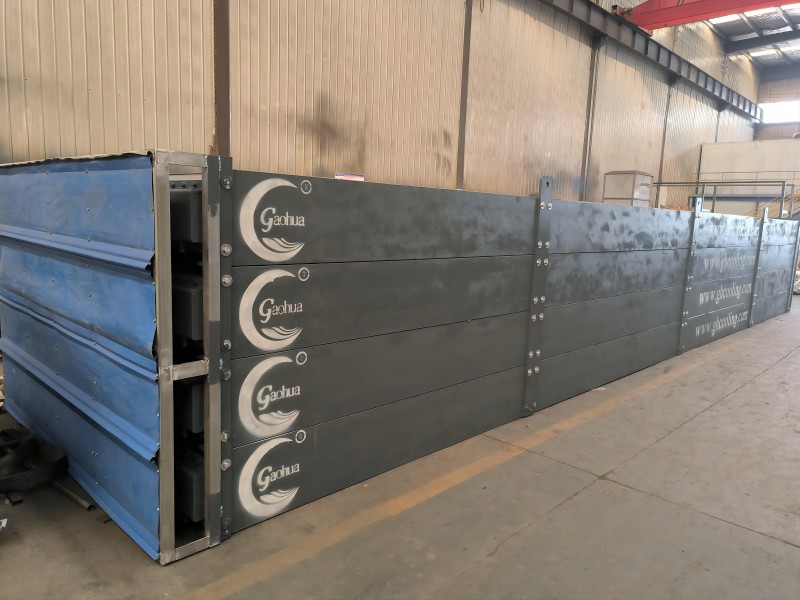
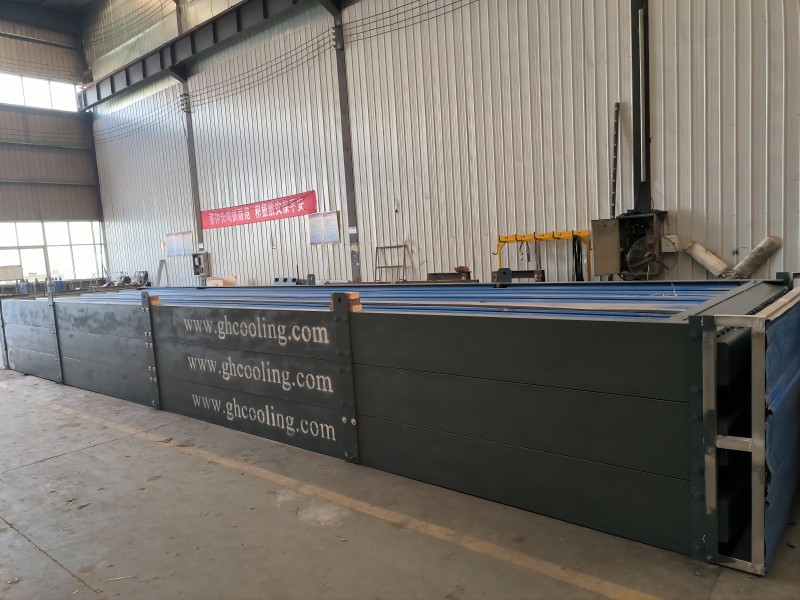
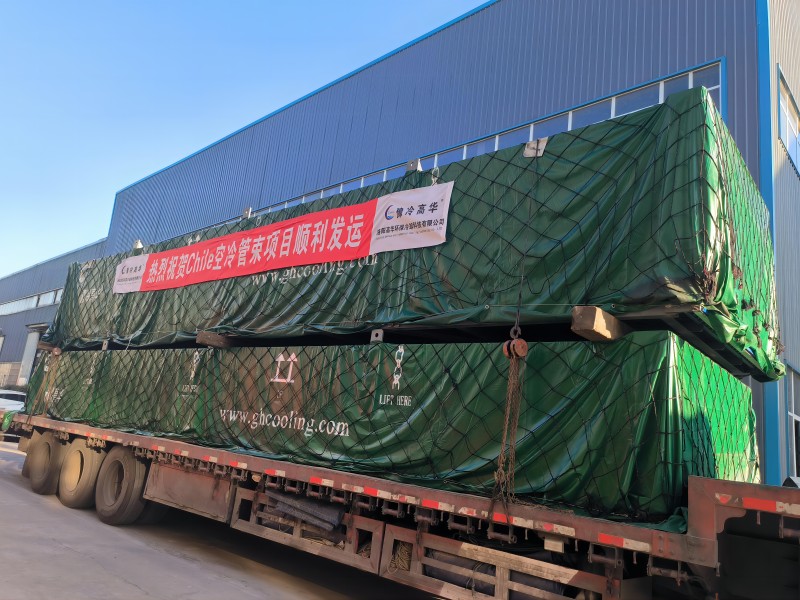
The cooling tower is a cooling device, which makes the hot water in the tower be cooled mainly by the evaporative cooling of water. To make full use of water resources, reduce the load of the urban tap water supply network, and reduce the operating cost, cooling water is treated by the cooling tower and recycled.
"Fill" is a medium that is used in cooling towers to increase the surface area available for the water.
In a cooling tower, the important is cooling tower fill. Fill is a plastic sheet used in cooling towers to build the more surface region of the tower. If we want to expand the surface, we need to consider into making more contact with water and fills, so that water will have more surface area in the cooling tower fill.
Cooling tower fills make hot water have much more surface area with sheet and air and the medium of tremendously extended film fills so that hot water is cooled quickly.
After being cooled the water is flowed into a water container from which it is pumped again to cool other hot water, and the warm air leaves the fill and releases from the above of the cooling towers, and like this Continuously cooling air from the bottom and release warm air from above to keep cooling tower cooling hot water continuously, to reduce the load of urban tap water supply network, and reduce the operating cost, So that we could make full use of water resources.
The filler is the most important part of the cooling tower, and its efficiency depends on the extent to which the cooling water and air are fully in contact with the filler. Filler temperature 50 °C ~ 68 °C, anti-aging, excellent performance, anti-ultraviolet, long life.
Cooling tower fill should be made to have more contact with water and fills, and longest time as possible. Fill allows the water to form thin flowing sheets to expose as much water surface area as possible to the interacting flow.
Types of cooling tower fill.
A cooling tower's performance is determined by many factors, cooling tower fills are one of the most important parts of a cooling tower, their types and quality decide whether a cooling tower can transfer heat efficiently or not. If you choose the right type of cooling tower fill, water will flow much more surface area, hot water will be cooled quickly.
